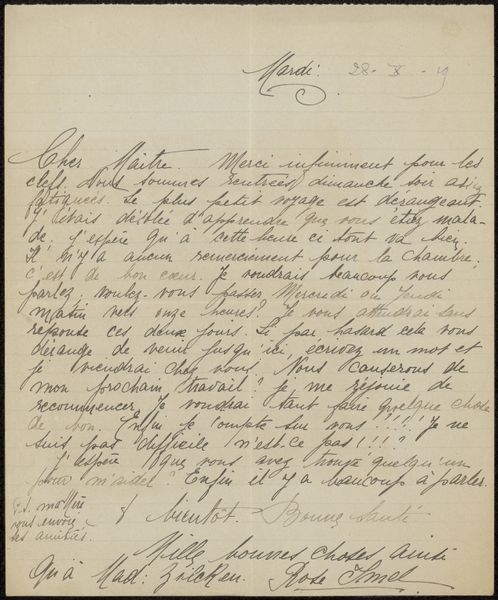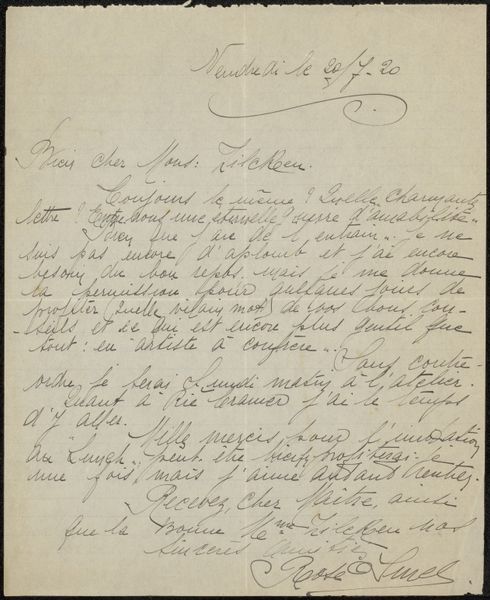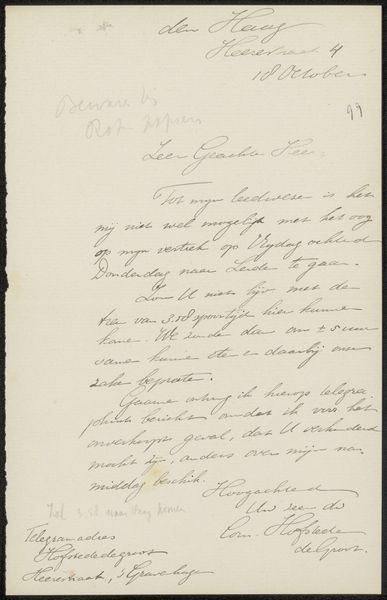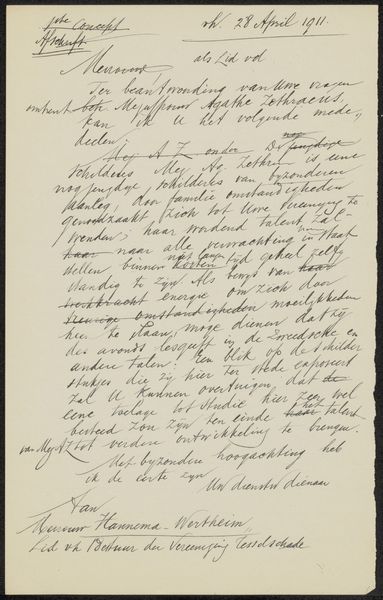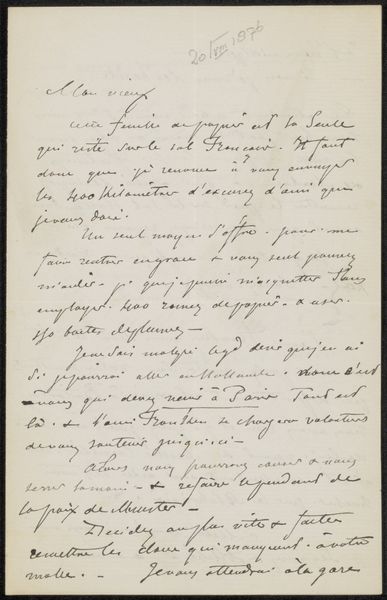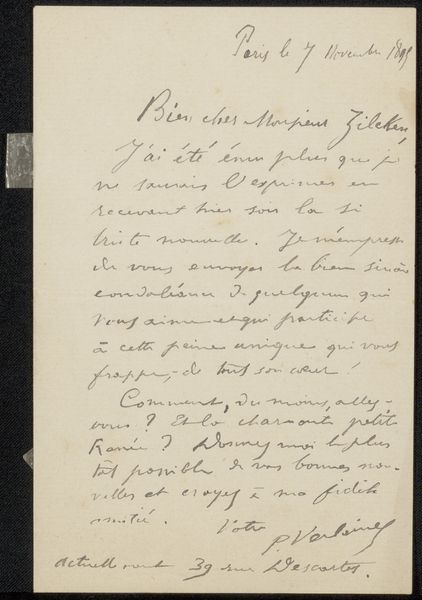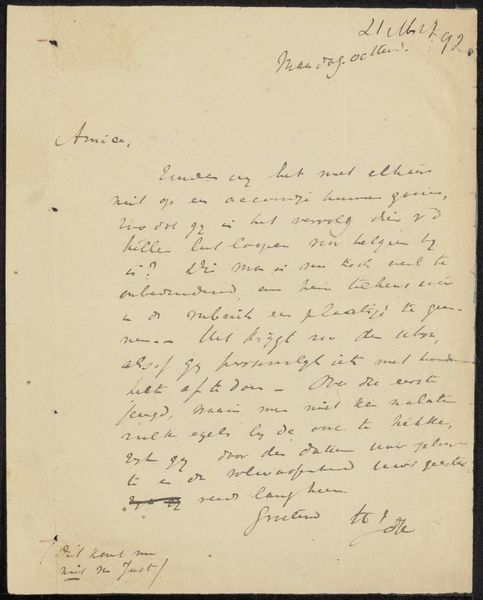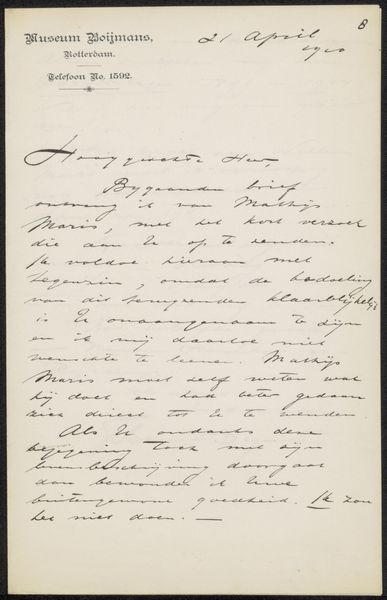
drawing, paper, ink
#
drawing
#
paper
#
ink
#
calligraphy
Copyright: Rijks Museum: Open Domain
Curator: This letter, likely from 1915, titled "Brief aan jonkheer Hendrik Teding van Berkhout" by Frans Everbag, seems unassuming at first glance. What stands out to you? Editor: Well, it's written in ink on paper, which gives it an immediate historical feel. The script is really beautiful, like artwork in itself. How would you interpret its meaning? Curator: Let’s consider the materiality here. Ink and paper are humble, readily available materials, connecting the writer to a long tradition of written communication. But the calligraphic style elevates this above a simple memo; it's skilled labor, careful and considered. Does that skill inform its value? Is it inherently separate from craft simply because it's a letter? Editor: I guess I hadn’t thought about it as labor before. I saw it more as a personal message, but now I see how much time and effort it would have taken to produce. Do you think the content of the letter changes the way we view the artistic skill involved? Curator: Absolutely. Understanding the social context – who is writing to whom, their relationship, the likely content – all shapes our interpretation of the act of making. The social dynamics at play in artistic creation are important, just like the paper or ink the letter is written with. Editor: That’s a good point. It’s almost like the materials and the message are equally important in understanding the complete picture. Thanks for explaining that! Curator: Exactly. And by appreciating those intertwined elements, we acknowledge the multifaceted processes and intentions behind the letter. I find it a very exciting way of considering even mundane historical ephemera.
Comments
No comments
Be the first to comment and join the conversation on the ultimate creative platform.
